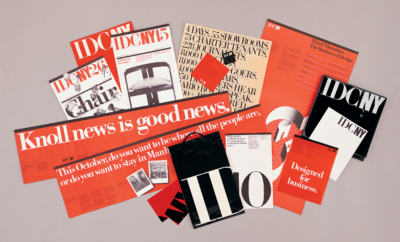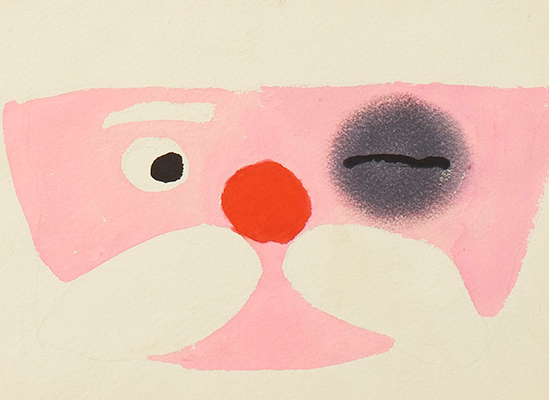 All images from a collection of vintage Paul Rand Christmas drawings, c. 1955. Courtesy of Wright.
All images from a collection of vintage Paul Rand Christmas drawings, c. 1955. Courtesy of Wright.
Design
Delving Deeper
Lot 255 Wright’s Paul Rand: The Art of Design sale, September 13, 2018: Collection of twenty-eight Christmas drawings. With an estimate of $2,000–$3,000, the group sold for $16,250. Some reasons for the high price:
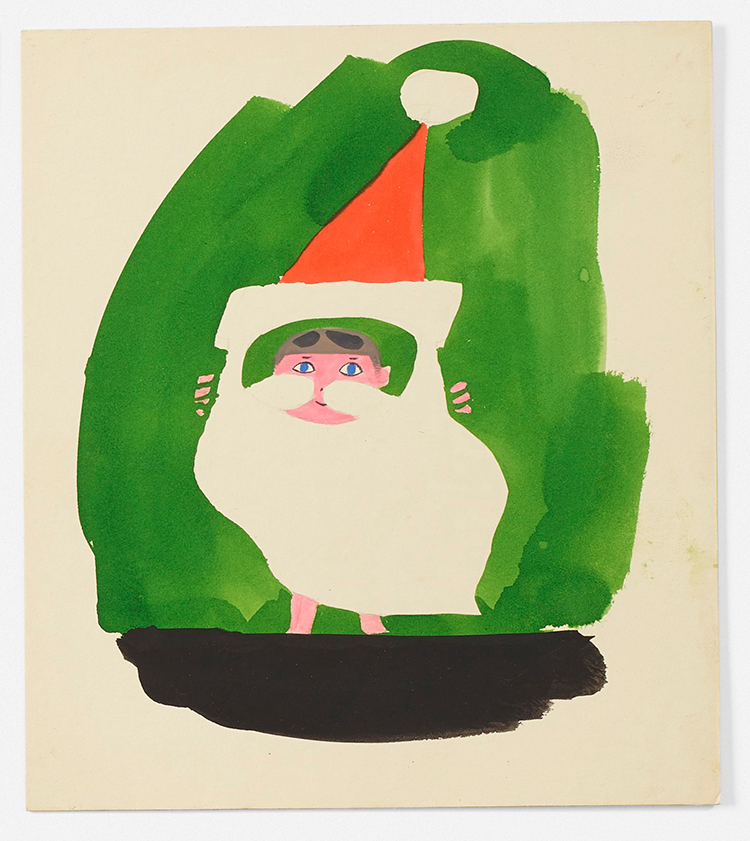
THE POET AND THE BUSINESSMAN
Paul Rand never completed any formalized graphic design education, yet he created some of the most recognizable graphics of the twentieth century. From his early days—beginning in the mid-1930s designing for Esquire among other well-known magazines—he applied a modernist aesthetic composed of simple, geometric shapes and effective contrasts to the editorial and commercial realms. In 1955 he launched his freelance career, a perspicacious move, as in 1956 he was hired by both Eliot Noyes, to design the new corporate branding for IBM, and Yale University, to a teaching position he held for almost forty years.
Even in a design-novice crowd, it’s difficult to find someone who hasn’t seen Rand’s work. IBM, ABC, UPS—numerous combinations of letters conjure images of his iconic brandings that still radiate throughout the mediascape. Rand mastered the semiotics behind branding, understanding meaning and morphing the utopian ideal of the “universal” into the recognizable, marketable, and mainstream. As great a contribution as he made to the visual identity of corporate America, he also dedicated his efforts to academia, teaching at Cooper Union and Pratt Institute before going to Yale. László Moholy-Nagy, legendary modernist of Bauhaus fame, synthesized these commercial and pedagogical strands, describing Rand as “an idealist and a realist using the language of the poet and the businessman.” While indoctrinated in the rigid modernism of the movement’s European pioneers, Rand’s creativity and sense of humor relaxed the discipline for a mass audience. As Richard Wright, president of Wright, observes, “He had the talent and the courage to make modernism human.”
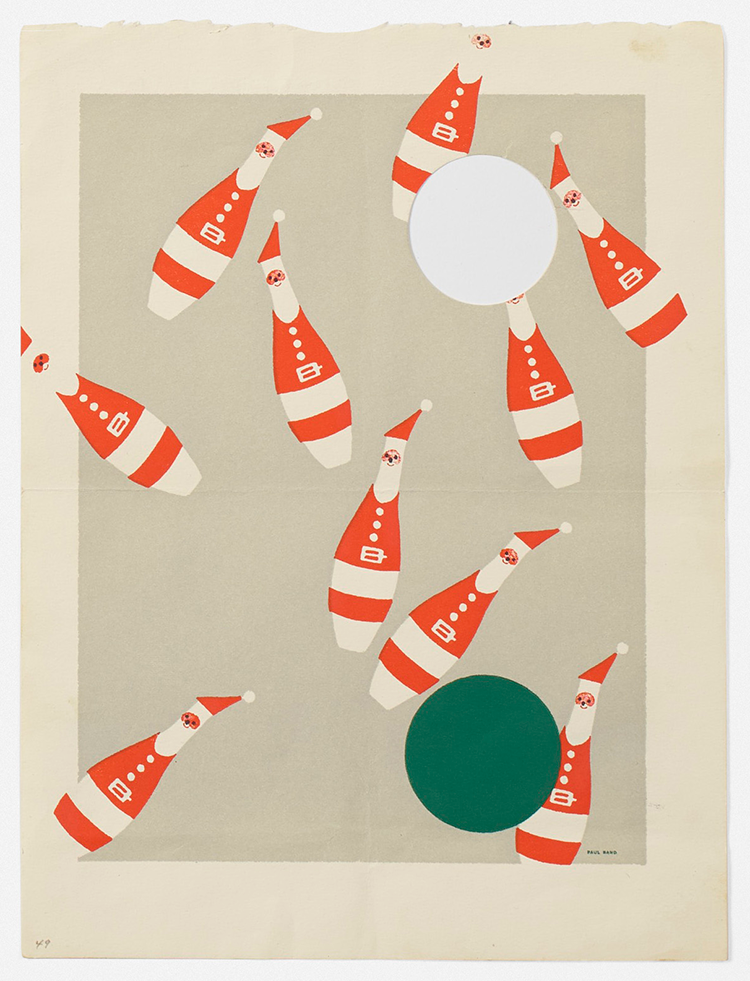
EYE-BEE-M & HO HO HO
While a sense of whimsy winks from behind much of Rand’s corporate work, that sensibility reveals itself in full festive force in this collection of Christmas drawings—a mix of prints and original drawings in acrylic on paper and wallpaper samples. Lacking the refinement of a corporate branding system, for sure, the drawings are a study in Rand’s spontaneous creativity, while still utilizing many of the visual principles employed in his broader work, such as reduced, recognizable shapes packed with meaning. A series of colorful dots on a green background suggests a Christmas tree, and red lines on a pink-and-white-striped background emerge as a candy cane in an abstraction that is both sophisticated and cheerful. The set offers twenty-one depictions of Santa Claus in which he takes various forms, including bowling pins, balloons, and a stand-in for Lady Liberty. As an ad man, Rand grasped the popular importance of Christmas and its crowd-pleasing character. Wright speculates that these drawings were intended to be given away rather than formally produced.
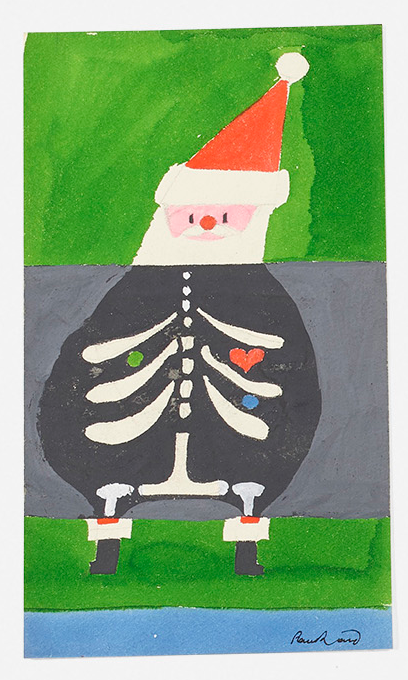
HOLIDAY SALE
Rand’s work is rarely on the market, primarily because the ubiquity of mass-produced American modernist graphic design seldom produces high sales margins. Further, after Rand’s death in 1996, his archive was deposited at Yale with select pieces entering museum collections. “Graphic design isn’t an active market, per se, for design,” Wright notes. “The success of this sale begins and ends with Paul’s reputation in the community.” Consisting of almost four hundred items, including pieces from his own collection of fine art and design—all acquired directly from Rand’s estate—the sale comprised an alluring capsule of his inspiration and the work of his contemporaries. The fact that the pieces came directly from Rand’s collection appealed to bidders, and the sale attracted a broader market than expected. While the iconic branding designs sold for high prices, the market also demonstrated appreciation for Rand’s lesser-known, more intimate work. These Christmas drawings drew multiple phone bidders and online interest, but were won by the Letterform Archive in San Francisco, California, which took home a number of other lots as well.


